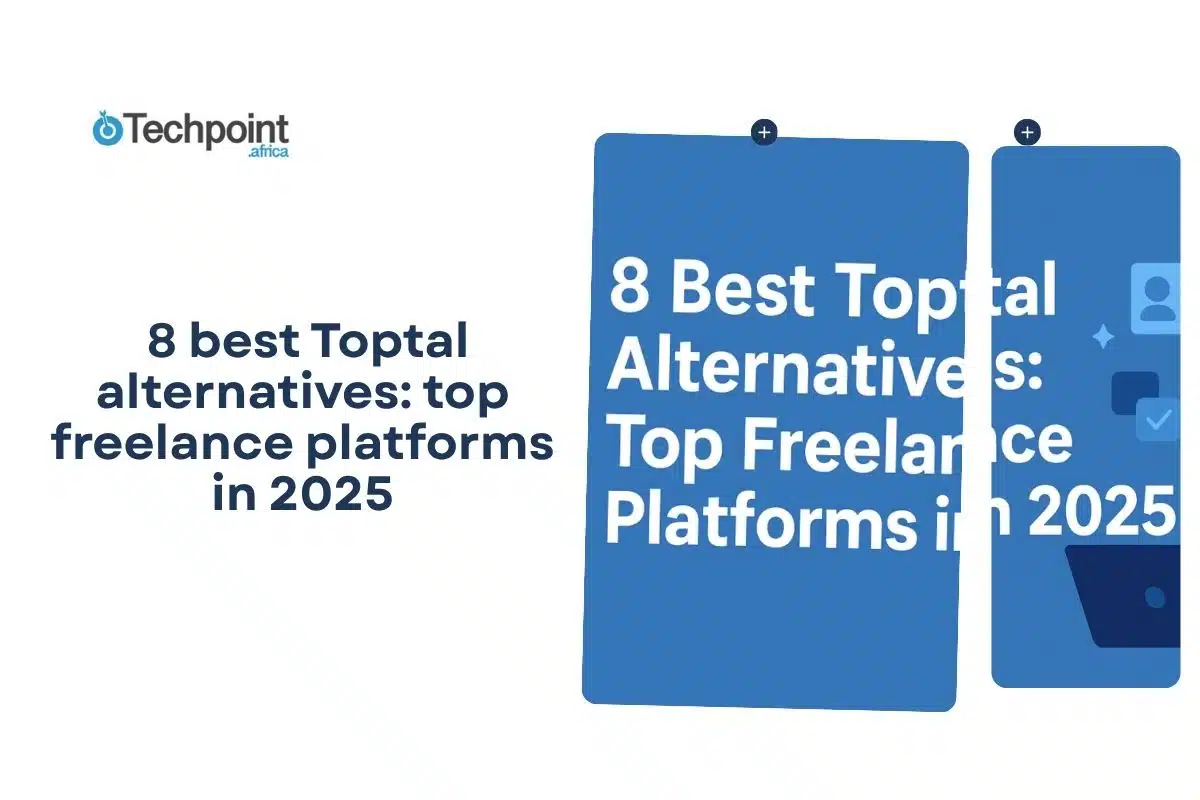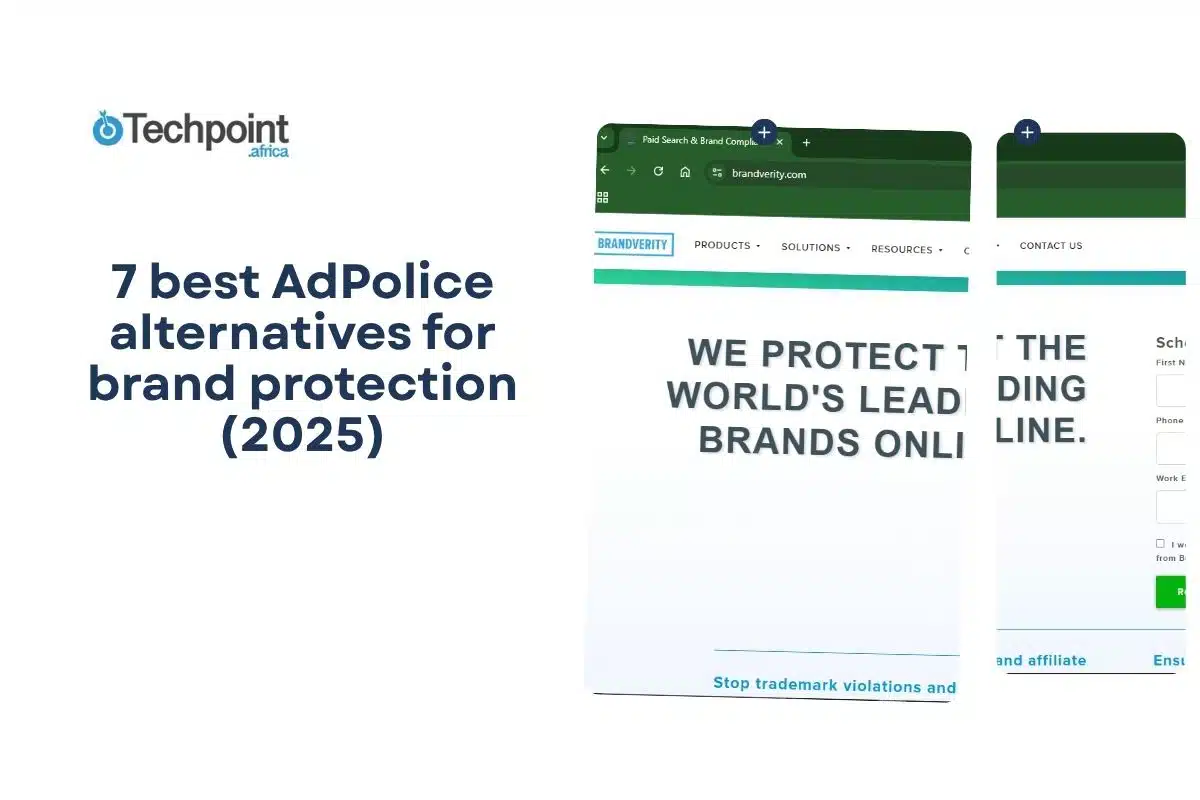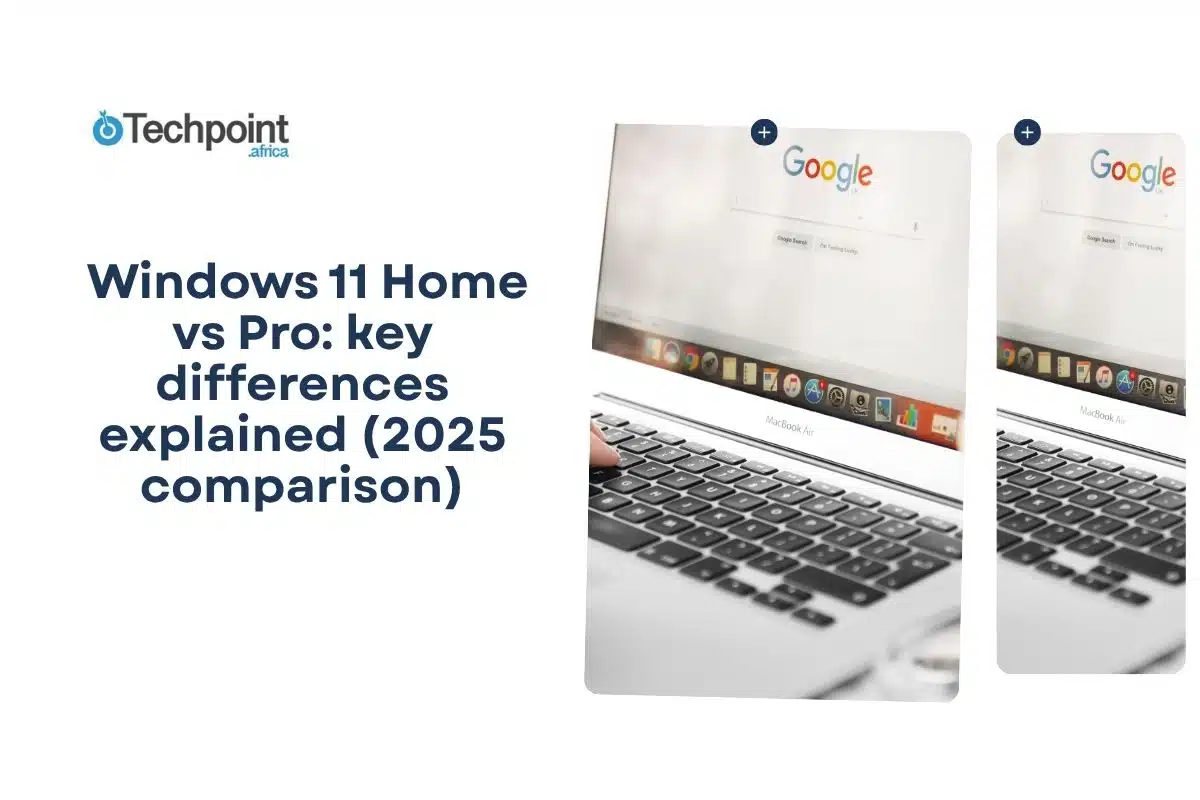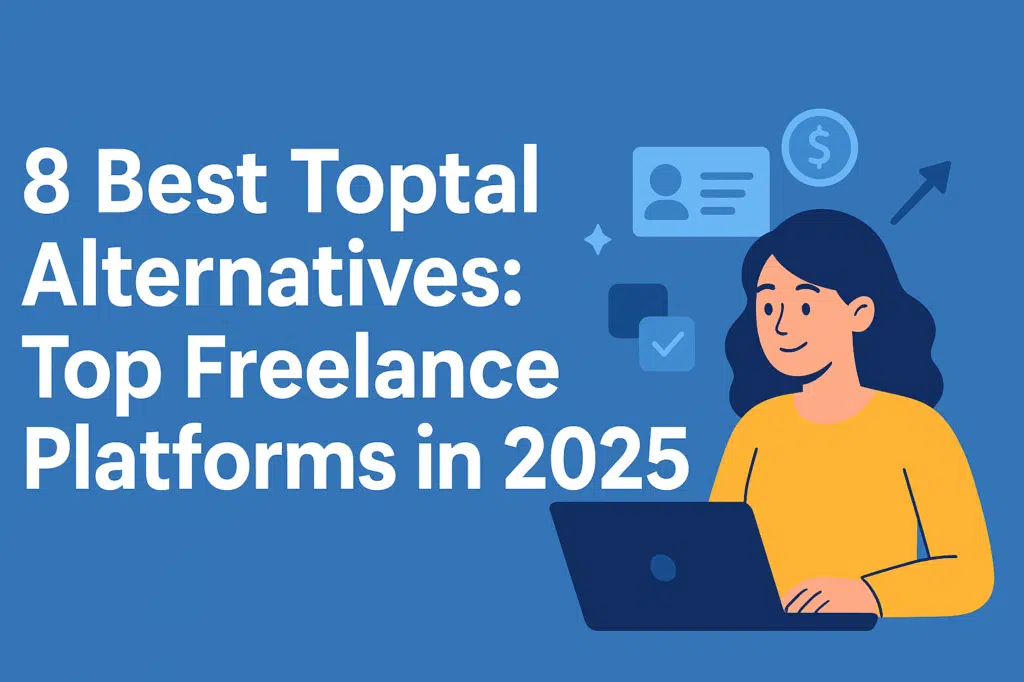
If you’ve tried hiring on Toptal, you already know it’s great, but pricey, selective, and not always the fastest match. Maybe you want more freedom, better rates, or a wider talent pool. The good news is that 2025 brought plenty of freelance platforms that deliver Toptal-level skill without the heavy gatekeeping.
In this guide, you will learn:
- The eight best Toptal alternatives in 2025.
- How each compares in pricing, quality, and speed.
- Which options work best for startups, agencies, and solo founders?
- Practical tips to choose the right platform for your next project.
The 8 Best Toptal Alternatives in 2025
- Upwork: The largest freelance marketplace with endless skill categories and flexible hiring options.
- Fiverr: Ideal for small tasks, creative gigs, and fast turnarounds without long contracts.
- Freelancer.com: A bidding-style platform where you can find talent for nearly any budget.
- Gun.io: Curated network of elite developers vetted for startups and enterprise projects.
- Lemon.io: Startup-focused, matching companies with verified software engineers fast.
- CloudDevs: Latin America–based talent pool offering vetted remote developers at fair rates.
- Guru: Traditional but reliable, with flexible contracts and milestone-based payments.
- UpStack: Specializes in pre-vetted global developers with quick onboarding and support.
Comparison table: toptal Top alternatives in 2025
| Platform | Pros / Cons | Best For | Pricing |
| Upwork | Pros: Huge talent pool, escrow protection. Cons: Service fees and varying quality. | Businesses are hiring across multiple skill sets. | 5–20% service fee |
| Fiverr | Pros: Fast delivery, transparent pricing. Cons: Quality varies widely. | One-off projects and small creative tasks. | From $5 per gig |
| Freelancer.com | Pros: Competitive pricing, large user base. Cons: Can take time to vet quality. | Short-term projects with tight budgets. | 10% project fee |
| Gun.io | Pros: Strong vetting, U.S.-based support. Cons: Mainly tech talent only. | Companies are seeking experienced developers. | Custom quote |
| Lemon.io | Pros: Fast matching, high-quality engineers.Cons: Limited to tech roles. | Startups need quick, vetted hires. | $45–$80/hr |
| CloudDevs | Pros: Similar time zones, high English fluency. Cons: Smaller pool than global sites. | U.S. startups are preferring nearshore talent. | From $45/hr |
| Guru | Pros: Low fees, SafePay protection. Cons: Dated interface, slower discovery. | Long-term collaborations. | 5–9% fee |
| UpStack | Pros: Rigorous screening, account management. Cons: Limited non-tech roles. | Growing teams that need consistent quality. | Custom quote |
Upwork
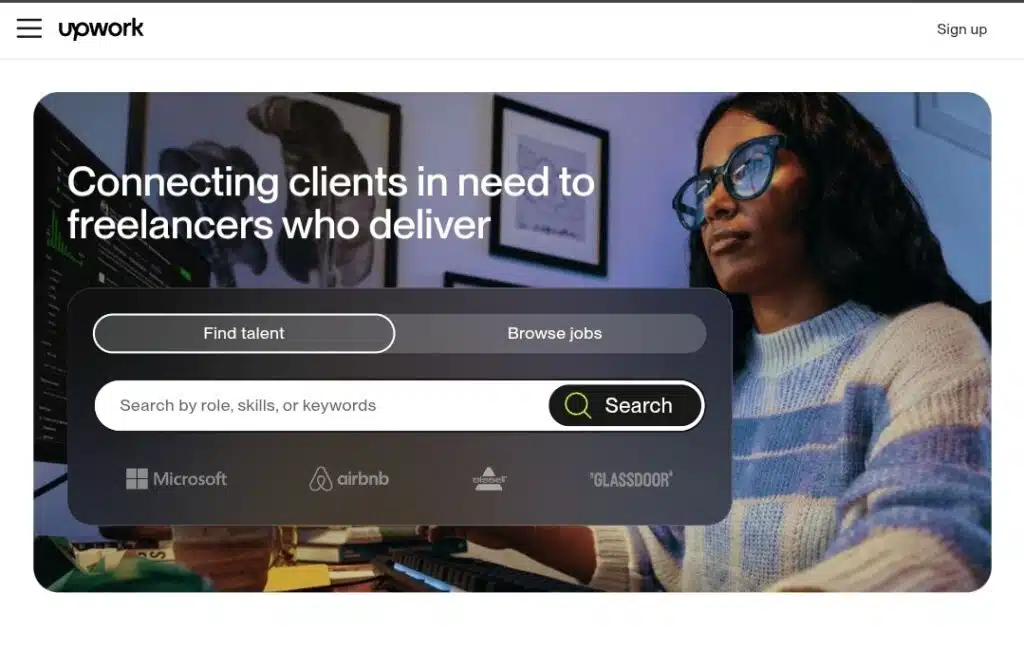
Upwork remains the heavyweight of freelance marketplaces — massive, flexible, and built for scale. It connects businesses to professionals in nearly every field, from software and design to marketing and admin. The platform’s smart matching tools make it easy to filter by skill level, rate, and client feedback, giving you control over who you hire and how you manage projects.
What sets Upwork apart is its structure. Clients can post open jobs or invite freelancers directly, then choose between hourly or fixed-price contracts. Built-in time tracking, escrow protection, and milestone payments keep things transparent for both sides.
The trade-off is cost: Upwork charges 5–20% in service fees, and quality can vary with such a huge talent pool. Still, for businesses managing multiple ongoing projects or teams, it’s unmatched in reach and reliability — a practical first stop when you need to hire fast without sacrificing control.
Fiverr
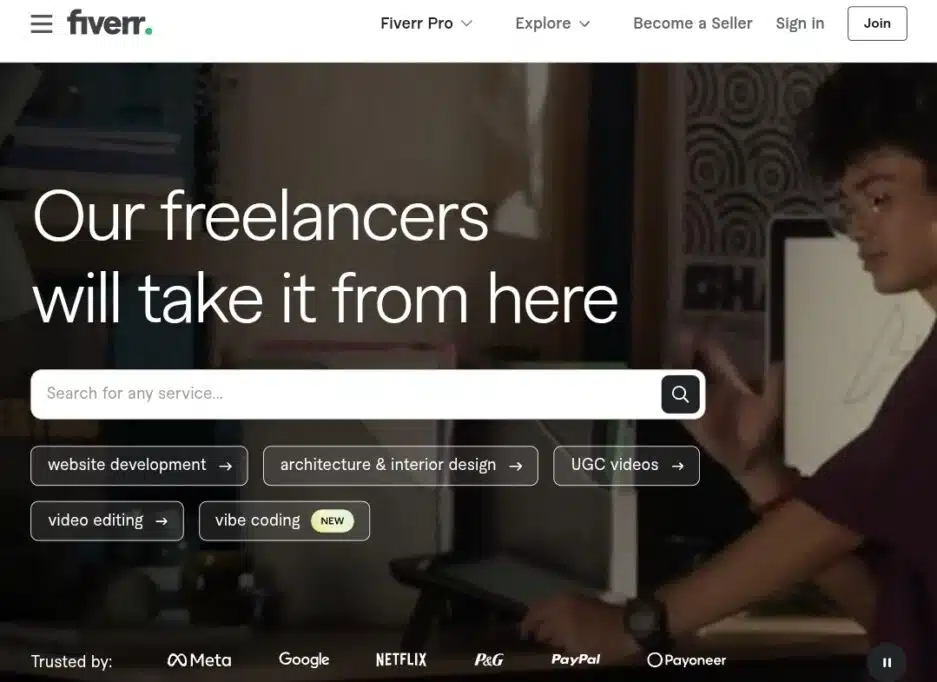
Fiverr built its brand on simplicity. Instead of posting job ads, clients buy pre-packaged “gigs” — ready-to-go services clearly priced and described. You can scroll through thousands of listings, preview portfolios, and order instantly, making it one of the quickest ways to get a project off the ground.
The platform thrives on creative and digital work: logo design, video editing, SEO, voiceovers, and more. Prices start at $5, but top sellers often charge hundreds for premium packages. Fiverr’s review system helps you gauge reliability before purchase, and its buyer protection keeps transactions secure.
It’s not the place for complex or ongoing collaborations — quality and communication can swing widely depending on the seller. But if you need fast, visual results with zero hiring friction, Fiverr delivers. It’s ideal for small businesses, solopreneurs, and marketing teams that value speed, clarity, and predictable pricing above all else.
Freelancer.com
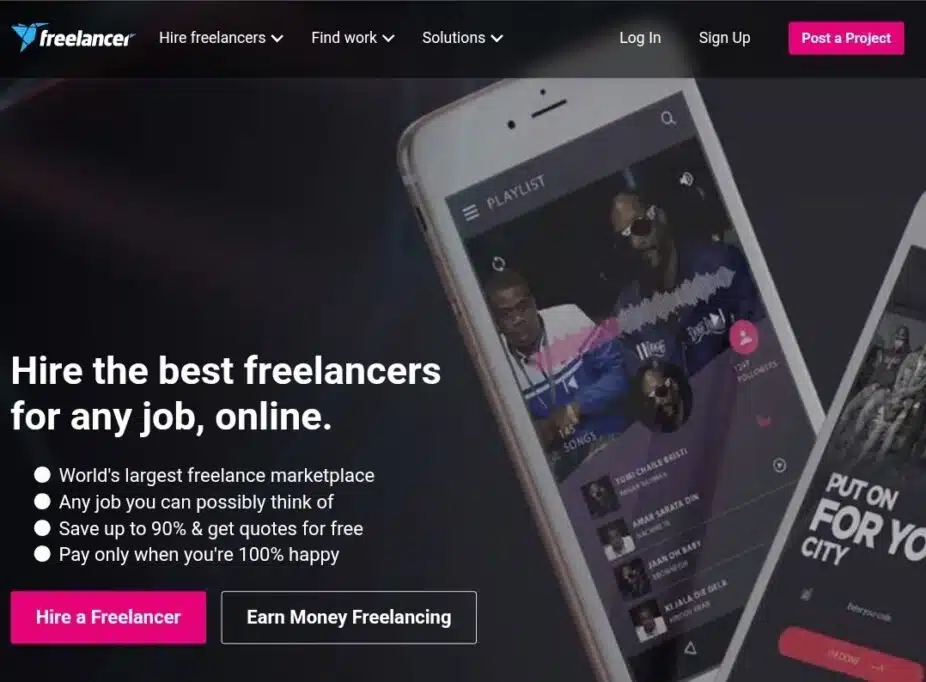
Freelancer.com keeps things classic — post a job, receive bids, and pick your match. It’s one of the oldest freelance marketplaces, built around openness and scale. With over 60 million users, it’s a space where nearly every skill exists, from coding and data entry to architecture and legal writing. That size, though, comes with mixed outcomes: quality can range from excellent to average depending on your screening process.
The platform uses a competitive bidding model, which often helps businesses with limited budgets stretch their funds further. Clients can view profiles, portfolios, and reviews before awarding a project, while milestones make payment safer and clearer.
Still, the bidding system means some freelancers undercut rates to win work, which may affect consistency. The best way to use Freelancer.com is strategically. Small to mid-sized projects, short-term support, or tasks that need multiple hands on deck. When managed well, it offers great value for its reach and flexibility.
Gun.io
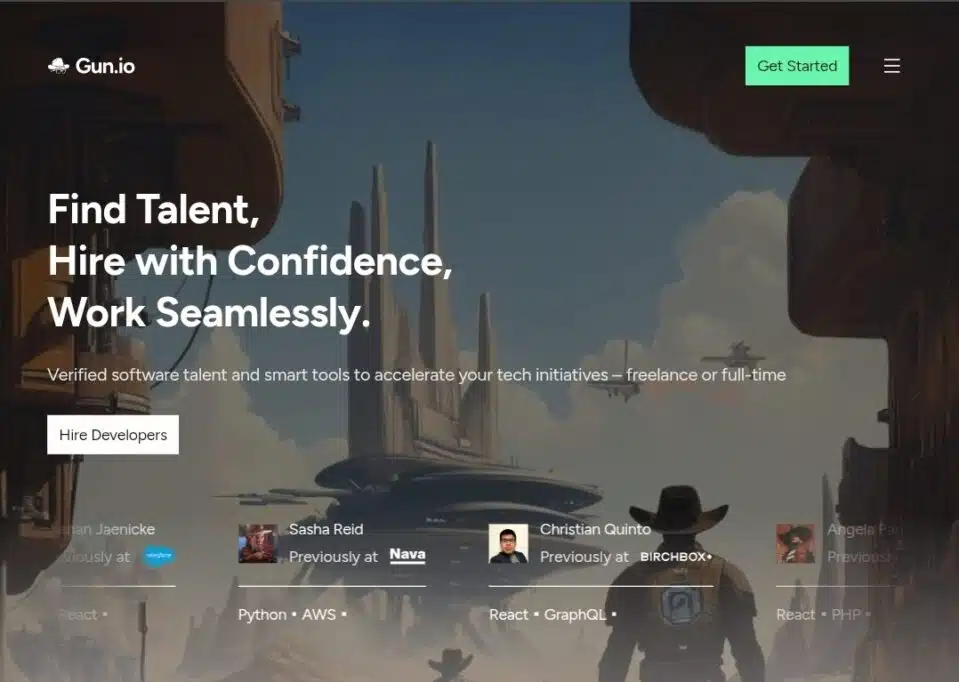
Gun.io is a platform built purely for developers — no distractions, no filler categories. Every freelancer is hand-vetted, not just for technical skill but also for communication and reliability. This makes it a strong choice for startups and tech firms that don’t have time to gamble on untested talent. Matches often happen within days, and every client gets personalized support from an account manager.
Unlike mass marketplaces, Gun.io’s network is intentionally small. That limited pool allows deeper screening and higher project success rates. Most of its developers have experience with U.S. startups or enterprise clients, which helps with time zones and collaboration standards.
Gun.io’s rates lean premium, and its focus on software development means it won’t serve creative or marketing needs. But for product teams that want stable, long-term engineering help without hiring full-time, Gun.io delivers dependable results that justify its niche approach.
Lemon.io
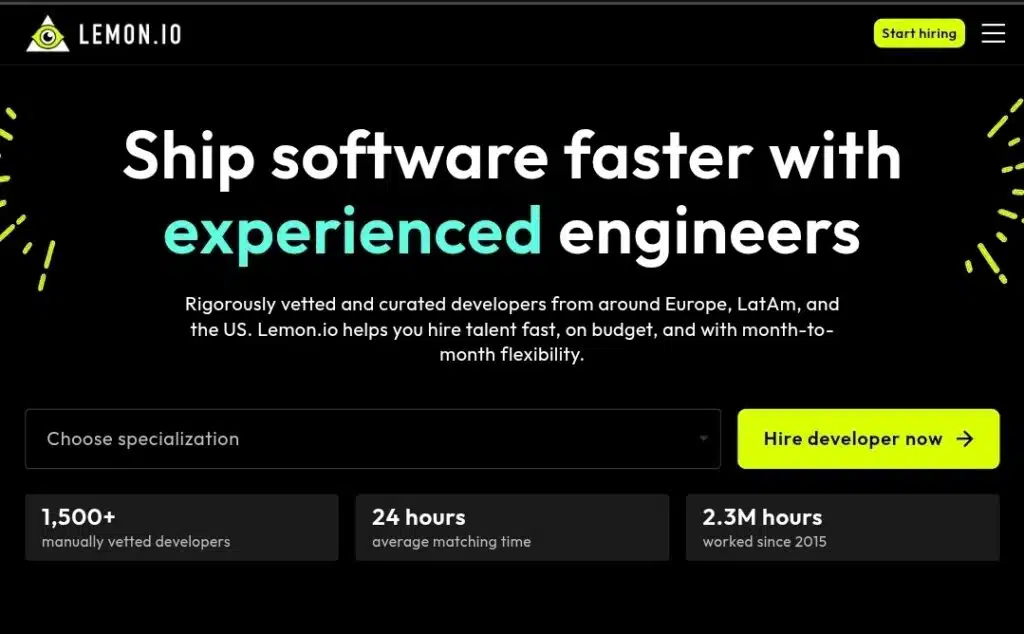
Lemon.io was built for startups that want skilled developers fast. The platform connects companies with pre-vetted engineers—usually within 24 hours. Its process is refreshingly simple: describe your project, get matched, interview the candidate, and start. No endless browsing or posting. Every developer goes through technical screening, soft-skill evaluation, and background checks before joining the network.
That vetting is Lemon.io’s real edge. It gives startups access to reliable talent without the steep learning curve of sifting through generic freelancer sites. The developers are used to agile environments and startup pace, meaning they’re comfortable working with lean teams and shifting priorities.
Rates typically range between $45 and $80 per hour, depending on expertise. It’s not the cheapest option, but the mix of speed, quality, and support makes it worth it. For founders who’ve outgrown the chaos of job boards and need trustworthy developers quickly, Lemon.io hits a rare sweet spot.
CloudDevs
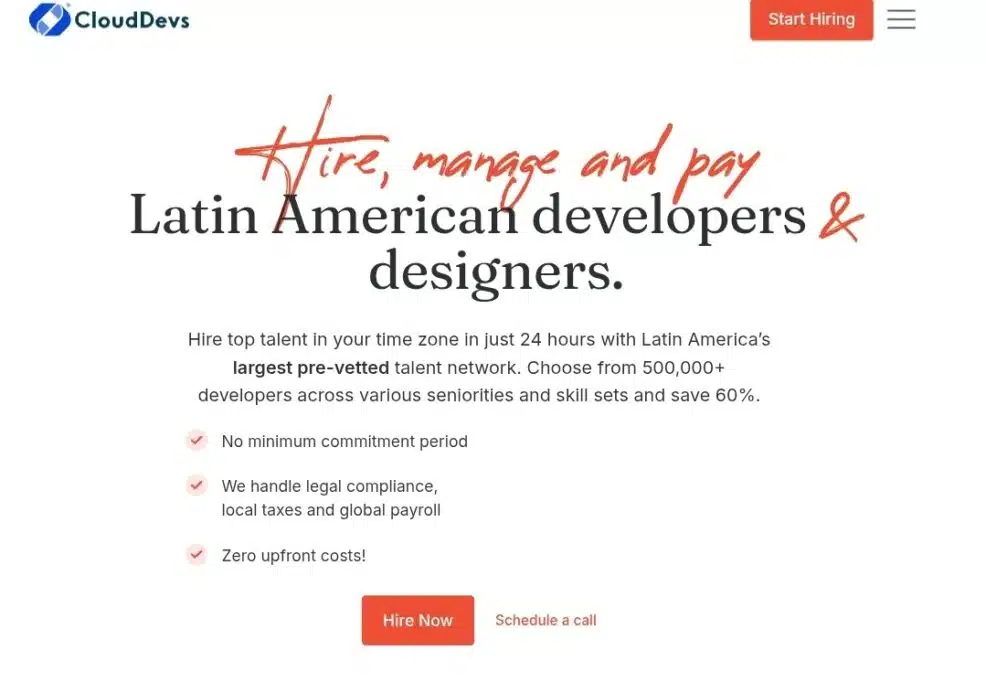
CloudDevs specializes in connecting U.S. and European startups with remote developers from Latin America. That nearshore setup means similar time zones, smoother communication, and overlapping work hours—something most offshore platforms can’t guarantee. Every developer is screened for both technical depth and English fluency, so clients spend less time onboarding and more time building.
The platform’s biggest strength is its predictability. CloudDevs handles payroll, contracts, and compliance, turning what could be a complex hire into a plug-and-play engagement. Projects typically start within 24–48 hours of matching.
At around $45 an hour, CloudDevs competes closely with Lemon.io on price, but stands out for its regional focus and time-zone advantage. It’s ideal for teams that prefer real-time collaboration without the premium costs of U.S.-based developers. Consistent, well-vetted, and responsive—CloudDevs offers a calm, structured experience in a freelance world that often feels chaotic.
Guru

Guru has been around since the early 2000s, long before the gig economy went mainstream. Its staying power comes from a quiet reliability—no flashy gimmicks, just a straightforward way to hire freelancers and manage projects. Businesses post jobs, invite proposals, and pay through the platform’s SafePay system, which holds funds until milestones are met.
Guru’s biggest appeal is flexibility. You can set hourly, task-based, or recurring contracts, making it suitable for ongoing partnerships rather than one-off gigs. Its commission fees are also lower than most competitors, sitting between 5–9%. That means freelancers earn more, and businesses stretch budgets further.
The downside is presentation. Guru’s interface feels dated compared to modern rivals, and discovering top talent can take time. Still, the platform’s steady base of experienced professionals—especially in writing, design, and IT—keeps it relevant. For companies that value stable relationships over speed or flash, Guru offers quiet consistency that gets the job done.
UpStack

UpStack takes a curated approach to freelance tech hiring, similar to Toptal but with a more approachable entry point. It builds long-term partnerships with both clients and developers, handling recruitment, onboarding, and project management in one ecosystem. The focus is clear: quality developers who can integrate seamlessly into remote teams.
Each candidate goes through multi-stage screening covering technical ability, problem-solving, and collaboration. Once matched, companies get access to a dedicated account manager who ensures stability throughout the project. This makes UpStack especially useful for startups and scale-ups growing remote engineering teams.
Rates aren’t publicly listed, but they tend to sit below Toptal’s while maintaining similar standards. The platform’s smaller community allows faster support and stronger relationships. For teams that want a premium development experience without corporate formality or inflated costs, UpStack quietly delivers on the promise of reliable, long-term remote talent.
How we chose these platforms
Every platform on this list was selected based on a mix of quality, trust, and usability. The goal wasn’t to find the cheapest options, but the ones that actually make hiring smoother and results more predictable. We looked at five key factors:
- Vetting process – How carefully each platform screens freelancers before listing them.
- Talent quality – Verified skills, project experience, and client feedback.
- Pricing transparency – Clear, predictable costs that match the value offered.
- Support and protection – Dispute resolution, payment safety, and client support.
- Speed and flexibility – How quickly you can match with the right talent and start work.
Data was drawn from verified company sources, community reviews, and real-world feedback from founders and hiring managers. Sites like TechRadar and Forbes helped confirm reputation and reliability benchmarks.
How to choose the best Toptal alternative for you
The best freelance platform should fit into your workflow, budget, and goals. Here’s a quick guide to help you pick wisely:
- For premium quality and reliability: Choose platforms with strict vetting like Upwork Pro or Lemon.io. They’re pricier but save you time and hiring headaches.
- For speed and flexibility: Go with Fiverr Pro or Freelancer.com. They let you find talent fast, test small gigs, and scale up when you’re ready.
- For startups or tech-heavy projects: Try Arc.dev or Gun.io. They connect you with vetted developers who understand agile and startup workflows.
- For creative projects and design work: 99Designs and Guru work best here, offering experienced freelancers in design, branding, and content.
Pro tip: Start small, hire for a test project, check communication and delivery, then scale once you’re confident.
Final Takeaways
- Every platform has its perks. The right one depends on your project pace and how much control you want.
- Price doesn’t always equal quality. What matters is skills that match your workflow, not just the brief.
- Keep a shortlist. Testing two or three platforms usually reveals who actually delivers.
- Great freelancers aren’t found once; they’re built through trust and steady collaboration.
Conclusion
Finding talent isn’t the hard part anymore, finding alignment is. The Toptal crowd has worthy rivals now, each offering a different balance of vetting, flexibility, and price. Pick out your platform strategically, stay clear on your needs, and notice where the process feels natural.
Need help deciding where to start? Explore a few of these platforms, compare experiences, and grow from there, the right match will stand out fast.

